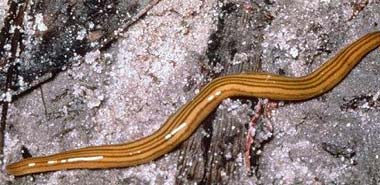
近日,科学家们宣布已经发现了蠕虫在被截肢后,控制它再生自己身体某一部分的基因。
诺丁汉大学的科研人员对蠕虫再生身体的一部分进行了研究,这些部位甚至包括头部和脑子――这项研究可能会使老化或损坏的人体器官和组织再生成为可能。
研究团队由Aziz Aboobaker博士带领,他们发现名为’Smed-prep’的基因显示了其在蠕虫躯体再生方面所起的重要性。
研究显示,蠕虫在被截去某一部分的时候,有超乎寻常的再生身体能力,这些部位甚至包括头部和脑子。这个"再生工程"是由一种基因来保证正确运作使得它们再生出正确的部位,并且大小、形状等均保持原性。
aboobaker博士说:“这些惊人的蠕虫提供给了我们很好的机会,能够观察一个非常简单的生物如何在一定程度上轻松的再生肢体。如果我们未来知道了组织再生是如何运作的,我们就可以开始研究如何替换损坏或患病的器官、组织和细胞。例如这将很好的为治疗老年痴呆症服务。”
研究人员称Smed-prep基因对于蠕虫正确的再生是必要的,虽然有时蠕虫干细胞可能还是会由于其他与基因无关的原因影响而重新生长成脑细胞。即便如此,如果没有Smed-prep基因,那这些细胞也不会再生形成正常的大脑。
研究人员丹尼尔-费雷克斯说:“对组织改造和再生机制的理解对于研究再生医学是至关重要的。涡虫非凡的再生能力是非常有名的,能在砍掉头以后再生一个新的出来。关于同源异型框基因Smed-prep,会起到在最开始阶段控制再生正确性的作用。这是一个真正扣人心弦的项目,有这项研究作为我的论文核心我感到非常幸运。(生物谷Bioon.com)
生物谷推荐原文出处:
PLoS Genet 6(4): e1000915. doi:10.1371/journal.pgen.1000915
The TALE Class Homeobox Gene Smed-prep Defines the Anterior Compartment for Head Regeneration
Daniel A. Felix, A. Aziz Aboobaker*
Institute of Genetics, Queen's Medical Centre, University of Nottingham, United Kingdom
Planaria continue to blossom as a model system for understanding all aspects of regeneration. They provide an opportunity to understand how the replacement of missing tissues from preexisting adult tissue is orchestrated at the molecular level. When amputated along any plane, planaria are capable of regenerating all missing tissue and rescaling all structures to the new size of the animal. Recently, rapid progress has been made in understanding the developmental pathways that control planarian regeneration. In particular Wnt/beta-catenin signaling is central in promoting posterior fates and inhibiting anterior identity. Currently the mechanisms that actively promote anterior identity remain unknown. Here, Smed-prep, encoding a TALE class homeodomain, is described as the first gene necessary for correct anterior fate and patterning during planarian regeneration. Smed-prep is expressed at high levels in the anterior portion of whole animals, and Smed-prep(RNAi) leads to loss of the whole brain during anterior regeneration, but not during lateral regeneration or homeostasis in intact worms. Expression of markers of different anterior fated cells are greatly reduced or lost in Smed-prep(RNAi) animals. We find that the ectopic anterior structures induced by abrogation of Wnt signaling also require Smed-prep to form. We use double knockdown experiments with the S. mediterranea ortholog of nou-darake (that when knocked down induces ectopic brain formation) to show that Smed-prep defines an anterior fated compartment within which stem cells are permitted to assume brain fate, but is not required directly for this differentiation process. Smed-prep is the first gene clearly implicated as being necessary for promoting anterior fate and the first homeobox gene implicated in establishing positional identity during regeneration. Together our results suggest that Smed-prep is required in stem cell progeny as they form the anterior regenerative blastema and is required for specifying anterior cell fates and correct patterning.







